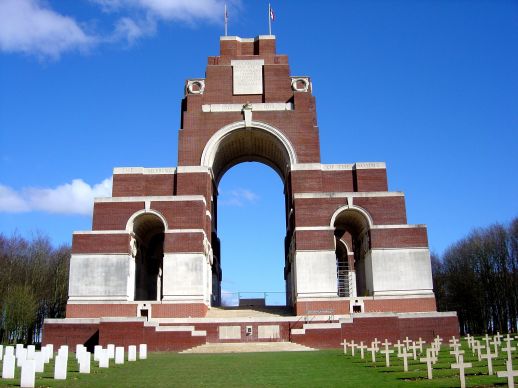Joseph William Anderson
Date of birth: 1890
Date of death: 2.10.1916
Area: Outwood
Regiment: London
Family information: Son of Ezra and Caroline Anderson
Rank: Private
Service number: 6054
War Service
Shortly after the outbreak of war, many miners answered Lord Kitchener’s call to arms and enlisted in the army. Joseph William Anderson was one of these mine workers. He was initially drafted to the 18th Battalion, Kings Royal Rifle Corps, where he became a Rifleman and was given the service number C/6961. However, some time later he was transferred to the 1/19th Battalion, London Regiment, with the service number 6054. In the absence of his service record, the date of this transfer is unknown.
The 1/19th (County of London) Battalion (St Pancras) Regiment was a Territorial Force. The Battalion was part of the 5th (London) Brigade, 2nd (London) Division, one of the fourteen Divisions of the peace time Territorial Force. In August 1914, the Division had just arrived at Salisbury Plain for annual summer camp, when they were recalled to their home bases. All units were mobilised on the 5th August and moved to St Albans
On the 10th March 1915, the 2nd (London) Division landed at Le Havre. Shortly after the Battle of Aubers Ridge on 9th May 1915, the formation became the 141st Brigade, 47th (2nd London) Division. During 1915, the 141st Brigade was involved in action at Festubert, Loos and at the Hohenzollern Redoubt.
In May 1916, the 141st Brigade was involved at Vimy Ridge before moving down to the Somme Battlefield. The Battle of the Somme commenced on the 1st July, however, the 19th Battalion, London Regiment, was not involved until the 15th September, when they attacked at High Wood. The 19th London Regiment, on being relieved on the 17th September, had incurred 316 casualties.
Later in 1916, the 47th Division was involved in the attacks on the Transloy Ridges. On the 1st October, the 19th London Regiment moved forward, in Brigade, to attack Eaucourt l’Abbaye. The leading waves were held up by machine gun fire in front of the German trenches and had to wait in shell holes, until tanks arrived to give support. They later advanced through the village as far as Le Barque Road, before being relieved at midnight on 4th October and moving to the Quadrangle.
Private Joseph William Anderson was killed in action, on the 2nd October 1916, but his body was not recovered from the battlefield. His name is remembered on the Thiepval Memorial to the missing of the Somme battlefield. It bears the names of more than 72000 officers and men of the United Kingdom and South African forces who died on the Somme sector, before 20th March 1918 and who have no known grave. Most of those commemorated died between 1st July and 18th November 1916.
Family Life
Joseph William Anderson was born in the summer of 1890. He was the fifth child of Ezra Anderson and his wife Caroline, formerly Watson, of Bottomboat. His father was a coal miner and the family had previously lived at Methley, before moving to Bottomboat, Stanley. At the time of the 1901 Census, the family had moved to Outwood and was living at Alexander View, on Leeds Road. On leaving school, Joseph William found work at a local coal mine and after a few years experience working underground, he was given work as a hewer.
 Thiepval Memorial
Thiepval Memorial

